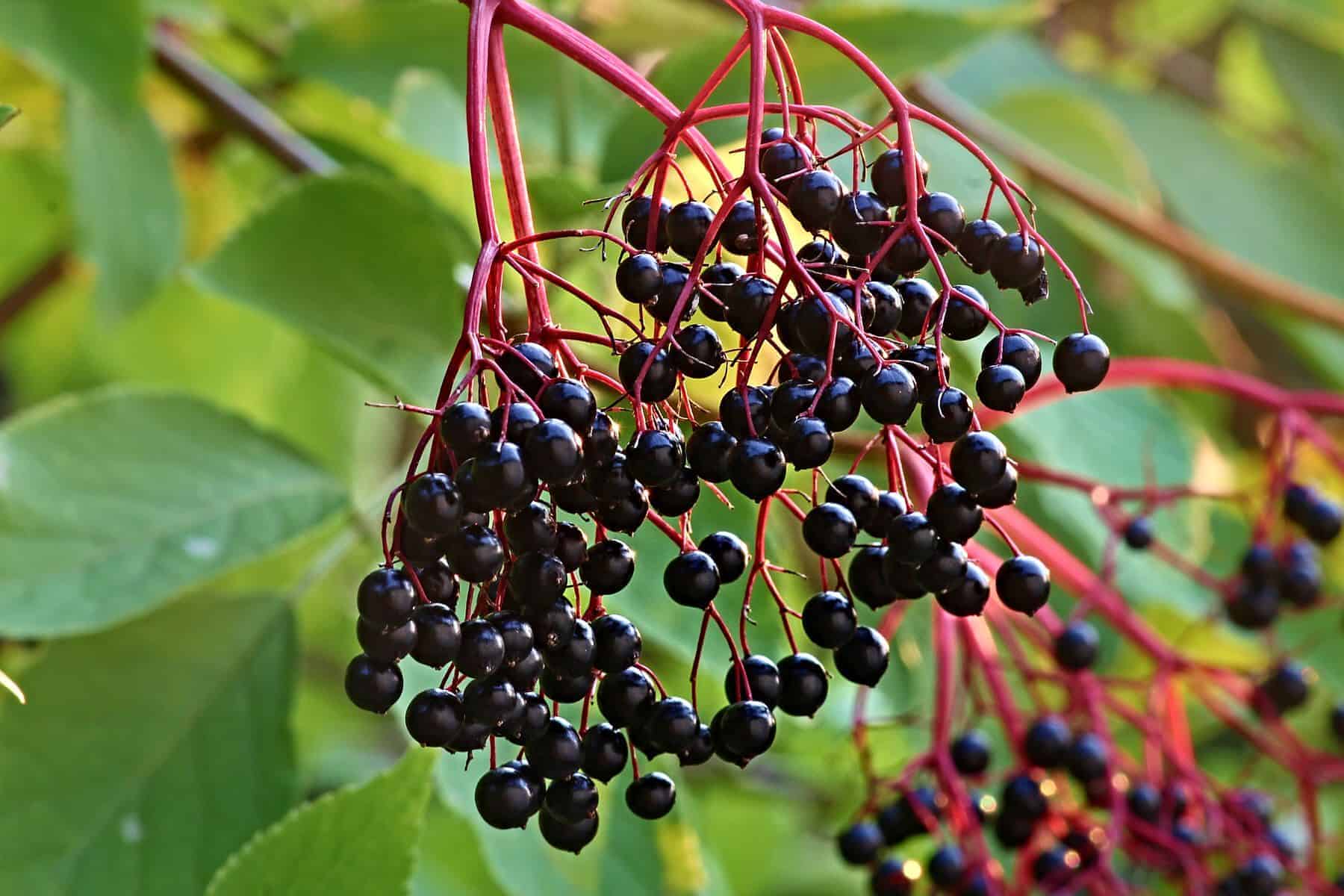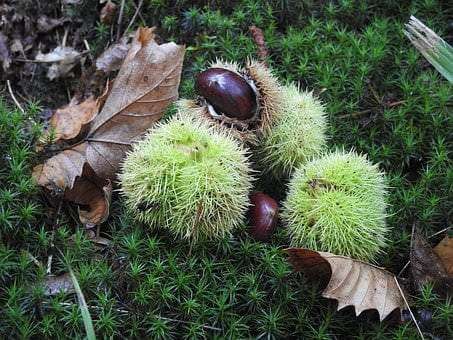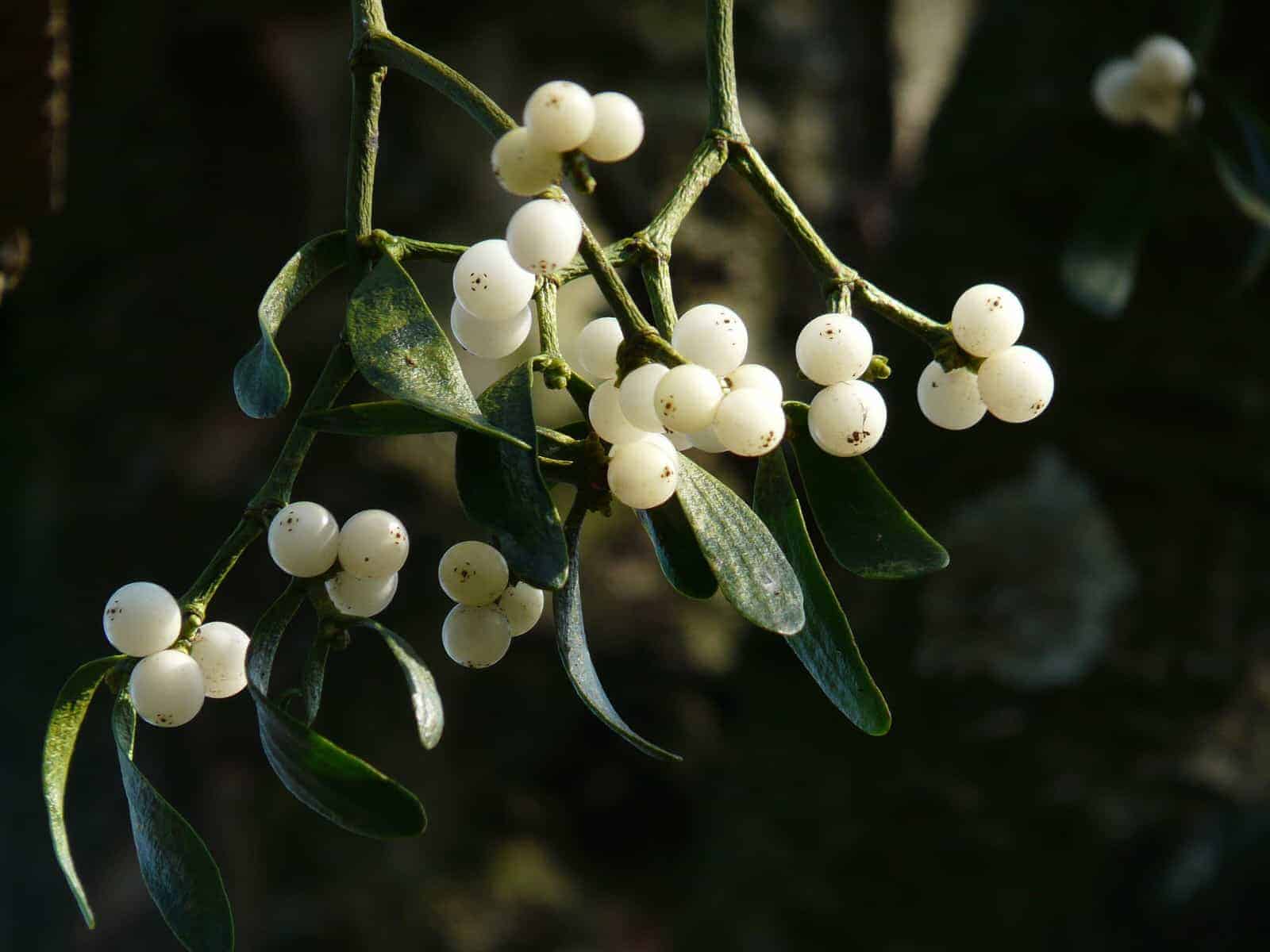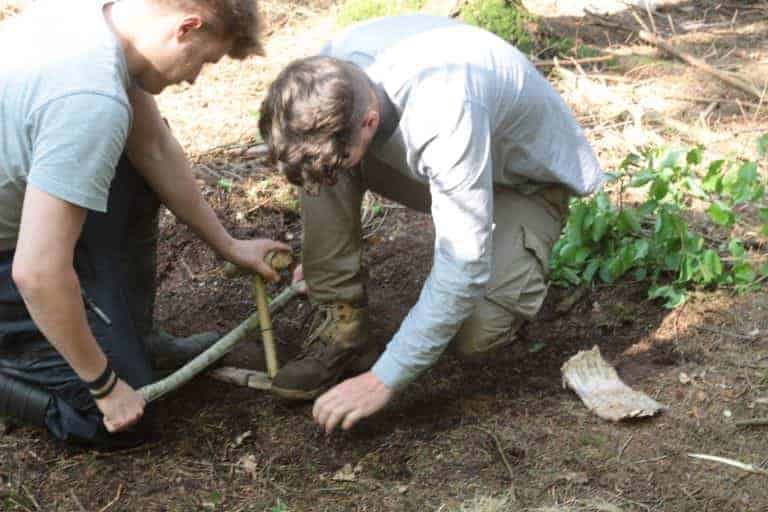Fruit to Forage Top 10
Top 10 Fruit to Forage This Autumn
As the summer draws to a close the early autumn brings some exciting fruit to forage. Obviously before helping yourself to nature’s bounty you need to ensure you have the landowner’s permission and remember to forage responsibly, after all, fruits, berries and nuts are essential food for our local wildlife too as well as an exciting find for us. Also be sure you are confident in your tree and plant identification, take an identification book with you for back up if you are not an experienced forager. It’s always best to double check, even the most hardened forager will refer back to their books sometimes too.
Which fruits can be foraged in Autumn?
1. Blackberries
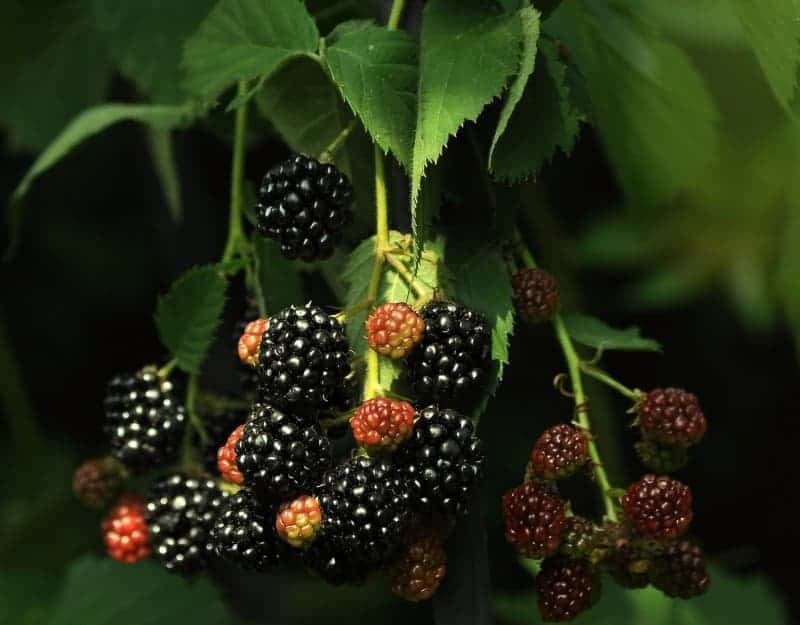
The humble blackberry is an iconic fruit here in the UK and can be eaten fresh from the plant or added to many puddings or jams. These berries are probably the easiest to find out of all foraged fruits as the bramble bushes can grow and survive almost anywhere. Blackberries are usually found in hedgerows and woodland areas, but even local parks and wasteland will be home to many bramble bushes too. These juicy little gems are a perfect introduction when foraging for fruit but as well as being tasty and easy to find they also pack a nutritional punch. These popular foraged fruits are high in many essential nutrients such as Vitamins A,C and E as well as potassium, magnesium and calcium so definitely worth indulging in.
2. Hawthorn Berries
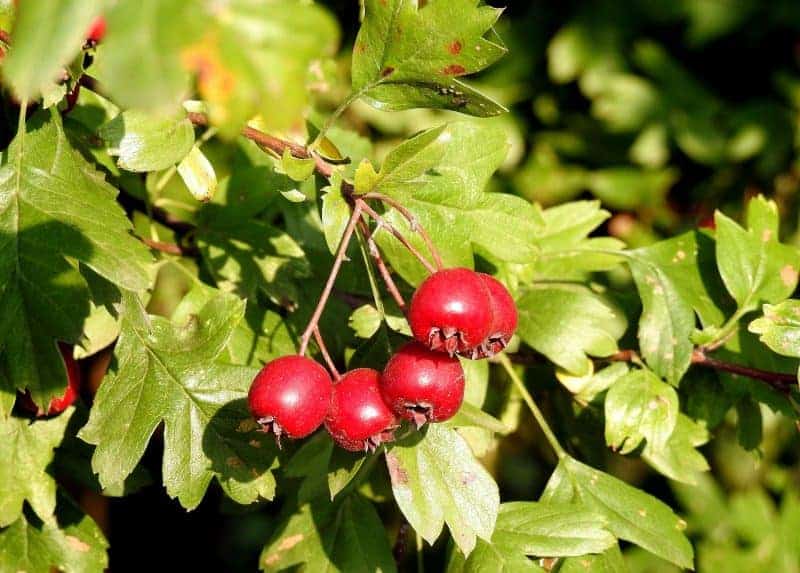
The vivid red haw berries of the hawthorn tree ripen in September here in the UK. This robust plant is often used to line boundaries of farmland but also grows deep in the British woodland too. The young leaves, flower buds and berries are all edible, but only their red berries with yellow flesh will be found at this time of year.
The hawthorn has been used for centuries for its health benefits, traditionally believed to be a potent heart tonic said to balance blood pressure. These berries are also loaded with antioxidants which in recent lab studies have been found to have strong anti inflammatory properties.
Eaten raw the haws have a tart sweetness but can be cooked up into jams and sauces or dried into fruit leather or tea.
3. Rosehips
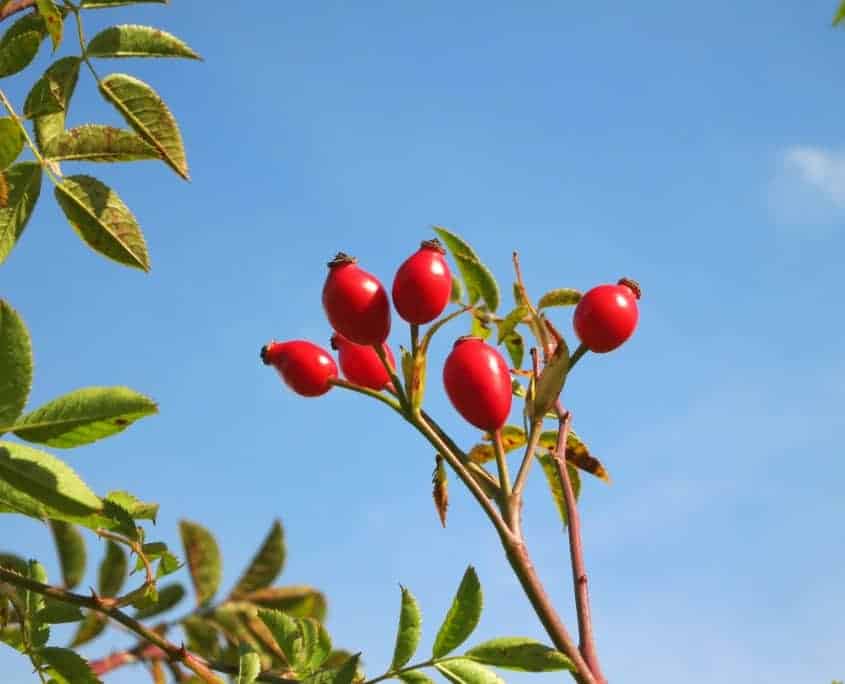
Rosehips are the edible fruit from the wild rose, or dog rose as its often called. These foraged fruits have long been used for their medicinal benefits and in Greek history it stated the dog rose got its name because its fruit, the rosehip, could cure the wound from a rabid dog bite.
Following the distinctive flower of summer rosehips are usually ripe for foraging from mid September to December, depending on our weather. Many hardened foragers recommend waiting until after the first frost to forage these fruit. It is said that the frost breaks down the cellulose cell wall of the fruit to give you a juicier tender fruit. If we have a late frost this can be replicated by leaving them in the freezer for 24 hours before cooking.
It is not advised to eat the whole forged fruit straight from the plant due to the protective hairs that surround the seeds, they are found to be an irritant if ingested.
To eat the fruit it is advised to split the fruit in half, clean out the seeds and surrounding pith and then the flesh and juice can then be consumed. Rosehips are commonly made into syrup which has been used for generations to treat coughs and colds due to the high levels of antioxidants. Rosehips were widely gathered and consumed during the second world war and encouraged to be people’s main source of vitamin C due to the shortage of other vitamin C rich food such as citrus fruits and the high levels found in the rosehips. These foraged fruits can also be made into jams and sauces as well as dried to make tea, but its syrup form is deemed to have the most health benefits.
4. Elderberries

After the flourish of edible creamy white flowers through the summer the Elder Tree then produces bunches of small dark purple berries. These little powerhouse berries pack a huge punch packed full of immune boosting Vitamin C and energy providing Vitamin B’s. These juicy berries are commonly consumed in the form of syrup or supplement form to help conquer colds, coughs and flu as well as to relieve minor headaches.
Eaten raw these berries can cause nausea and gut irritation so it is highly recommended to cook these little gems before consuming. As well as in syrup form these dark purple gems can be made into berry based jams, puddings or cooked and strained to make juice.
5. Bullace
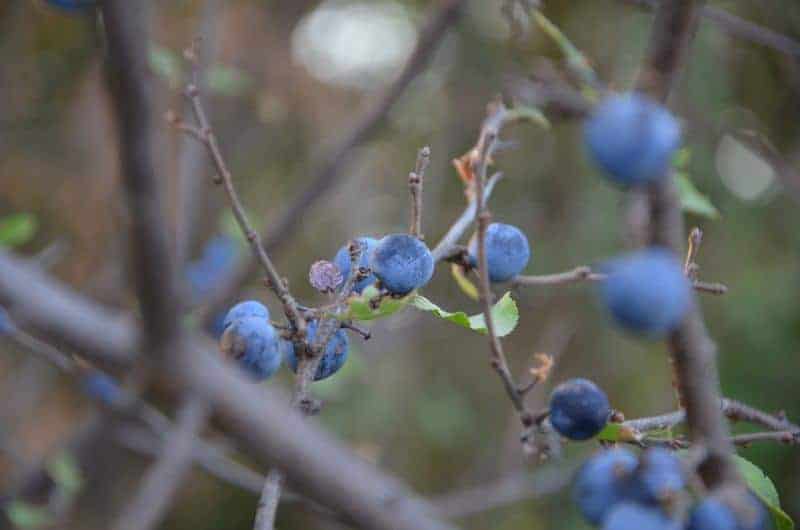
A sub species of the wild plum, the Bullace looks like an overgrown sloe, spherical and deep purple in colour, not to be mistaken for the closely related oval shaped Damson.
Bullace have become rare but can still be found in UK hedgerows and in some woodlands where they grow into small trees rather than remaining a small shrub.
These increasingly rare fruits are usually ripe around October and have a distinct plum like flavour, though slightly more acidic. These fruit can be eaten straight from the tree but also go well in pies, tarts and jams. The Bullace, just like its plum relative, has been found to aid digestion due to their high levels of dietary fibre as well as containing immune boosting vitamin C.
6. Sloes
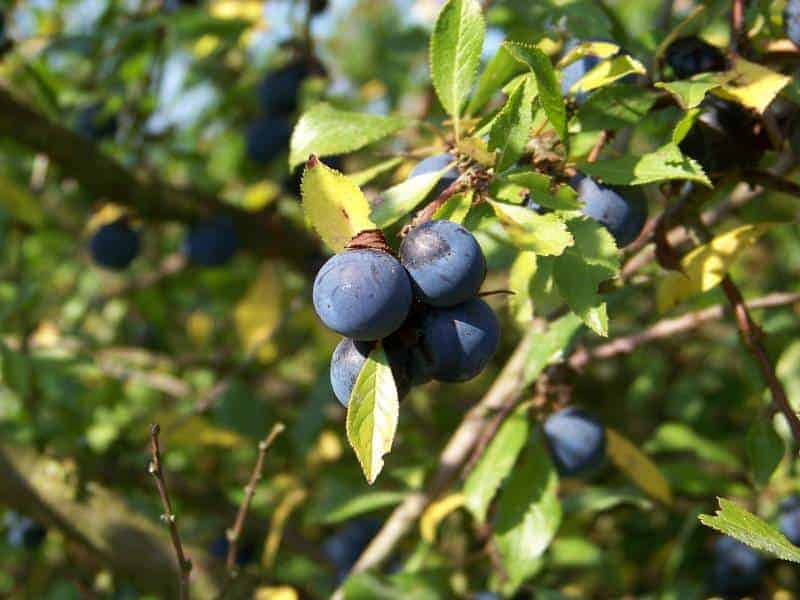
Sloes are the fabulous fruit from the mighty blackthorn and are commonly found in woodland and hedgerows across the UK. This hardy plant can spread quickly and often large thickets can be found intertwined with other hedgerow plants.
Due to the early flowering of this plant, our weather between early March to late April will determine the abundance of this crop. If we have a mild spring with a little rain and plenty of sun then it’s expected that you can forage a bumper crop from August into November.
Sloes are traditionally used to make Sloe Gin, Vodka or wine though many sloe jam recipes can also be found.
Though the fruit is high in Vitamin C & E it isn’t clear if the nutritional value remains so high having been steeped in gin for the winter, sadly.
7. Rowan Berries
Rowan berries are the small acidic fruits of the Rowan Tree/Mountain Ash. It is not definitively known whether the berries are toxic when eaten raw in small quantities though it is said that consuming more than a few can lead to gut irritation so the advice would be to freeze or cook them first as the toxicity is then reduced from extreme cold or heat.
These bright red berries are most commonly eaten in jams, marmalades and sauces to accompany rich meat such as game. The vibrant little berries are found to be high in Vitamin C, sorbic acid and dietary fibre. Higher levels of sorbic acid mean that these foraged fruits have higher antibacterial properties compared to may other wild berries.
Rowan trees can be seen in woodland, parkland and commonly on roadsides. These berries ripen from late summer and can be harvested into autumn, though as with all foraged fruits, don’t take them all as the local wildlife need them as a food source too.
8. Crab Apples
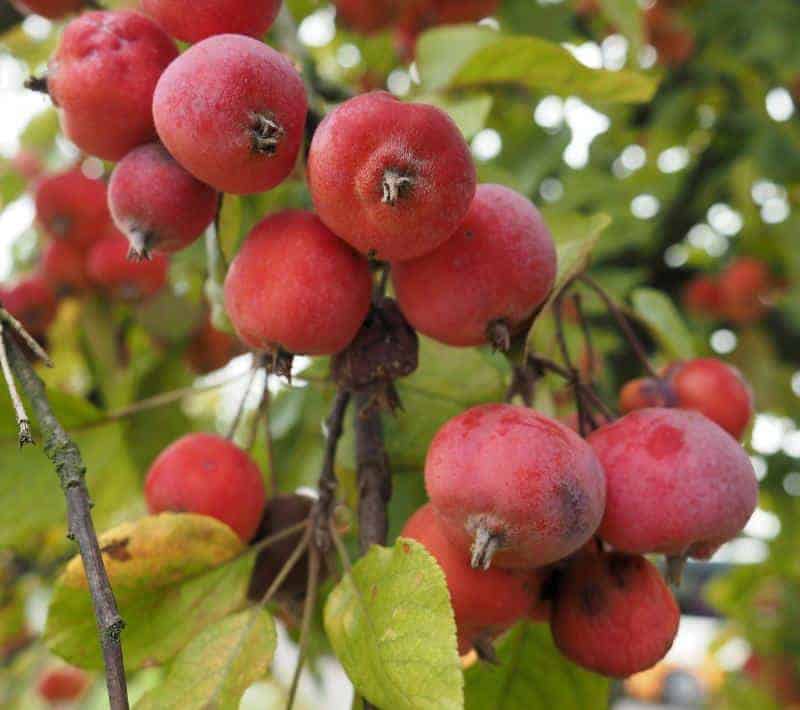
The crab apple tree is a common tree in England and dates back to the Neolithic Era here in the UK. Sadly it doesn’t grow as well in Scotland and Wales but some trees can still be found there.
The small apple shaped fruit are usually no bigger than 3cm in diameter and are either yellow, green or red in colour. The crab apples can be foraged from mid August well into October, depending on the summer weather.
These wild fruits still have a distinct apple flavour though are often too tart to eat raw but are amazing once cooked. Just like many foraged fruits at this time of year they are a great addition to puddings and sauces. Also due to their naturally high pectin levels they are excellent for jam making. These mighty fruits also pack high levels of tannins and acids necessary for fermenting the fruit into cider, extra sweetness will be needed due to their tart flavour but it will be worth the extra sugar to produce crab apple cider.
Crab apples have also been found to have a high nutritional value containing good levels of Vitamin C and B12 along with calcium and magnesium so keep your eyes peeled for these often overlooked fruits when foraging.
9. Whitebeam Berries
A close relative to the Rowan the Whitebeam is a broadleaf deciduous tree mainly found in Southern England. The small bright orangey-red Whitebeam berries are sometimes known as chess apples and strangely are deemed to be at their best when they are wrinkly and nearly rotten, though its advised to eat them cooked rather than fresh from the tree.
These trees are said to be a rare find in true woodland these days but can be found in parkland and when you find one the berries can be picked at their wrinkly best in early Autumn. Be mindful not to harvest the whole crop as these berries are valuable food for the local wildlife, and you might not be the only person foraging in that area.
As with many foraged fruits these berries are at their best added to hedgerow jams or as sauces to accompany meat.
10. Wild Raspberries
When foraging fruit in late summer into early autumn you might be lucky enough to find a patch of wild raspberries. These can be found in mixed woodland, hedgerows and wasteland. The unripe fruit are often mistaken for unripe blackberries but by simply studying the difference in leaf shapes and noticing the larger thorns on the bramble bush then the difference should be clear.
The berries ripen in late summer lasting into early autumn, depending on the weather and these can be enjoyed at their best, straight from the plant at their freshest. Eating just one cup of fresh raspberries provides you with 50% of your daily Vitamin C requirements, along with 12% Vitamin K, 6% of your folate, 5% of your Vitamin E as well as being high in iron and potassium. These berries can be cooked into many dishes too, but personally I think these are definitely at their best fresh from the plant
As with all foraged edibles be respectful not to take the whole crop for yourself so you can share your find with the local wildlife who rely on it for their survival. Also be mindful to not trample their habitats too.
So head on out and explore to see what you can forage at this time of year in your local area. Then you pick, cook and brew, but most of all, enjoy!

